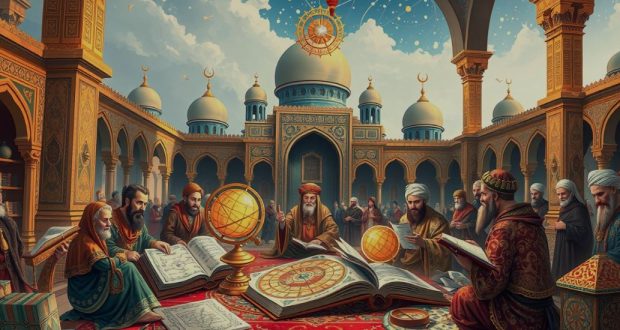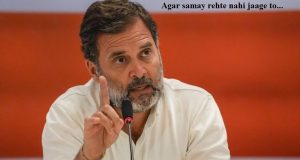REVIVALISM OF ENQUIRY AND SCIENTIFIC REASONING IN MUSLIM YOUTH OF INDIA; A RENAISSANCE OF INHERITANCE
The 21st-century Muslim youth is witnessing a quiet but profound renaissance a revival of enquiry, scientific reasoning, and intellectual curiosity. This shift marks more than a modern trend; it reflects a historical legacy inherited from the Islamic Golden Age, a period when Muslim societies led global advancements in science, medicine, philosophy, and technology.
A Glorious Past: The Foundations of Scientific Legacy
Islamic civilization flourished intellectually between the 8th and 13th centuries, particularly under the Abbasid Caliphate (751–1258). Baghdad, the empire’s heart, became a beacon of knowledge, where scholars translated classical Greek texts and built upon them with original contributions in astronomy, mathematics, medicine, physics, chemistry, and philosophy.
Scientific terms such as algebra, algorithm, chemistry, alcohol, and alkali all trace their origins to Arabic. Prof. Jamil Ragep of the University of Oklahoma notes that until around 1600 AD, Islamic civilization remained at the forefront of scientific advancement.
Prominent thinkers like Al-Khwarizmi (the father of algebra), Al-Razi (who identified smallpox and measles), and Ibn Sina (whose Canon of Medicine influenced Western medicine for centuries) exemplify this heritage.
Al-Farabi, the philosopher known as the “Second Teacher” after Aristotle, and Al-Biruni, who calculated the Earth’s circumference with remarkable precision, were part of this intellectual explosion. Innovations were not limited to ideas, the adoption of paper technology from China revolutionized knowledge sharing and literacy, boosting education, commerce and bureaucracy.
Decline and Misconceptions
However, this golden period saw decline after the Mongol invasion of Baghdad in 1258. As Europe entered the Renaissance, the Islamic world slowly fell behind. Historian George Sarton famously remarked that those who were once the world’s teachers became its students.
A myth that persists is that Islamic scholars opposed modern technologies particularly the printing press. A frequently cited claim suggests that a 16th-century Ottoman fatwa banned the press. This narrative, often recycled on social media, portrays Islam as hostile to innovation. Yet historical evidence suggests otherwise.
The source of this claim a French priest named Andre Trot provided no primary evidence and scholars have since questioned its validity. In reality, expelled from Spain in 1492Jews brought printing technology with them to the Ottoman Empire and were allowed to use it. Christian and Jewish presses operated freely, casting doubt on the idea of a sweeping ban.
A More Nuanced Reality
Far from being opposed to technology, the Ottoman state selectively embraced it. Italian scholar Luigi Fernando Marsigli, with access to the Ottoman elite, dismissed the idea of a religious prohibition. He attributed the limited early use of printing to low demand and economic factors, not religious dogma.In fact, in 1588, Sultan Murad III issued a farman (royal edict) permitting the sale of Arabic books printed by the Medici Oriental Press in Florence. Even Mughal emperor Akbar, known for his openness, declined to introduce the printing press not for religious reasons, but because he valued the aesthetics and artistry of traditional calligraphy, and feared economic displacement of scribes.
By 1727, printing in Ottoman Turkish was formally allowed when Sultan Ahmed III granted permission to Ibrahim Muteferrika, a Hungarian convert to Islam. His press published numerous books, starting with a Turkish-Arabic dictionary. The press eventually faded not due to religious suppression but because of economic sustainability and the lack of mass readership.
Rethinking the Narrative
This pattern suggests that opposition to technological innovation was not religious but socio-economic. Scribes resisted the press as a threat to their livelihood just as artisans in other cultures resisted industrial machinery.
Similarly, the slow adoption of printing in Europe also reflected gradual change, many early printed works lacked lasting impact. Nonetheless religious edicts (fatwas) in the Ottoman Empire never had autonomous power over state policy.
The Ulema functioned within the framework of the sultan’s interests and decisions regarding technology were based on practicality, not dogma.
Suppose, for argument’s sake, a fatwa against the printing press had been issued. Could that alone explain the decline of Islamic science ? If Akbar praised for secularism also declined the press, can one blame only religious orthodoxy ? Is Africa’s current underdevelopment caused by religious scholars ? Clearly, history is shaped by a web of cultural, political and economic forces.
The Modern Renaissance
Today, Muslim youth are reawakening to this rich intellectual legacy. The spirit of enquiry and scientific thinking is resurging in academic, technological and cultural spheres. Contemporary Muslim societies are increasingly participating in the global scientific enterprise, reconnecting with their storied past.
In a 2009 speech in Cairo, President Obama highlighted the Islamic world’s contributions to human knowledge, from algebra to medicine. This recognition echoes the need for a balanced understanding of history one that honors past achievements and draws lessons from decline without succumbing to myths.
Conclusion
The revival of scientific temperament among Muslim youth is not just a hopeful phenomenon it is a renaissance of inheritance. By critically examining history, dispelling myths and embracing inquiry, today’s generation can reclaim the innovative spirit that once shaped civilizations
 Times Of Pedia Times of Pedia TOP News | Breaking news | Hot News | | Latest News | Current Affairs
Times Of Pedia Times of Pedia TOP News | Breaking news | Hot News | | Latest News | Current Affairs






